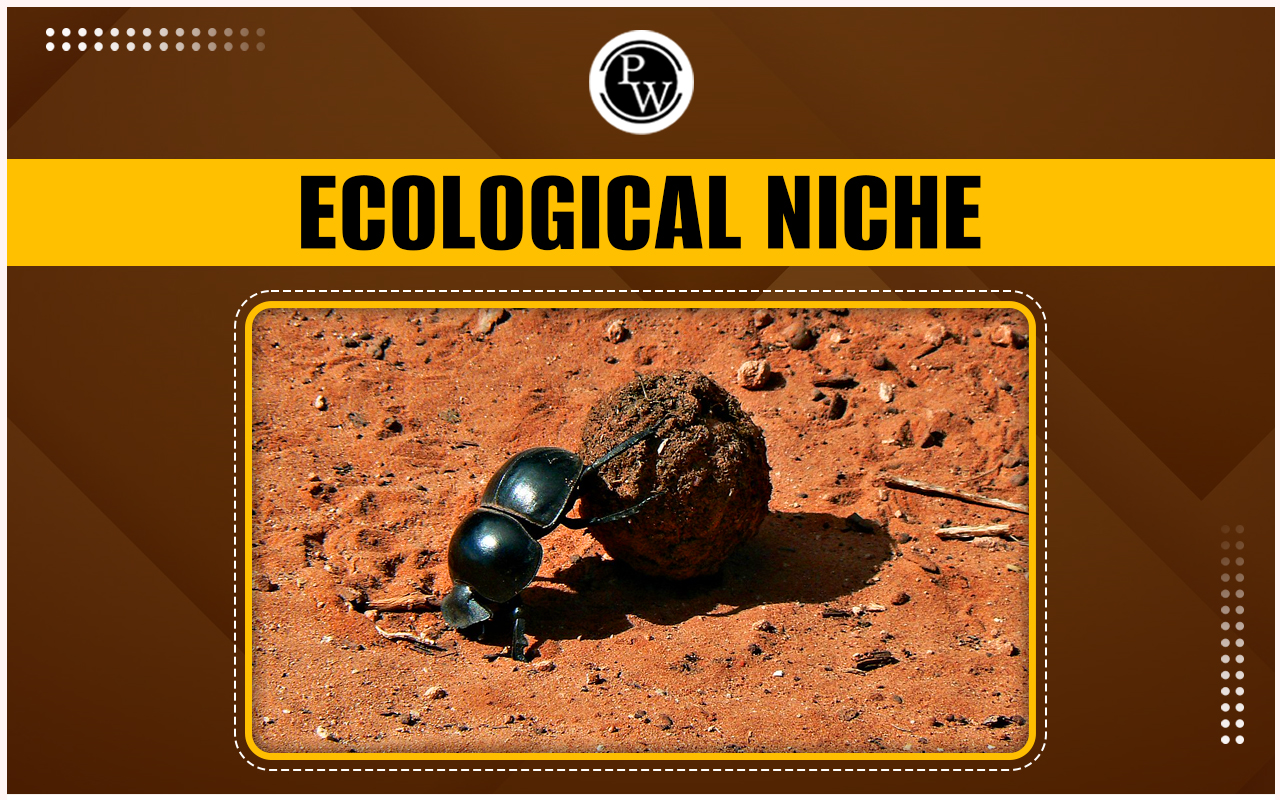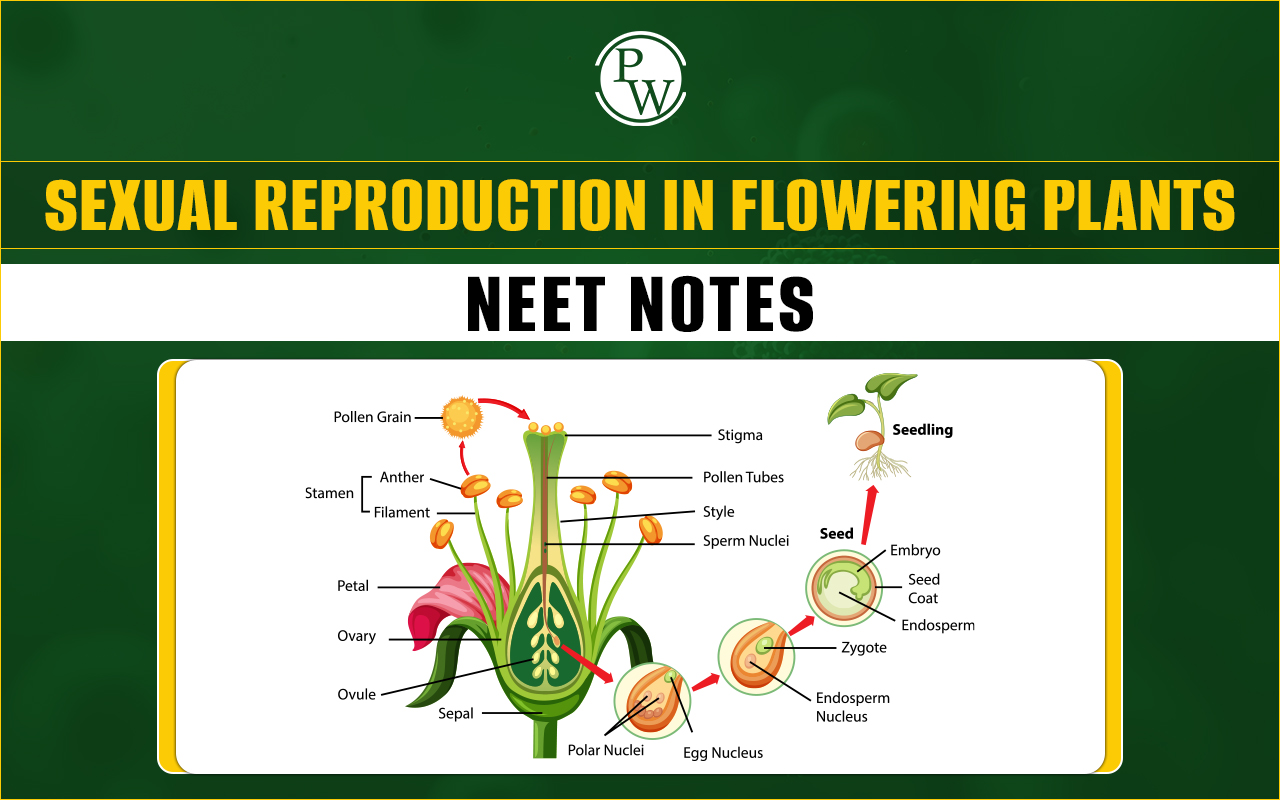
Ecological Niche: An ecological niche is the role and position of a species in its environment, describing how it interacts with resources and competitors and how it affects these factors. It includes how a species grows when resources are abundant and threats are minimal and how it competes for resources, serves as prey, and hunts for food.
A species' niche depends on biotic factors like food and predators and abiotic factors such as temperature, soil nutrients, and light. For example, dung beetles eat dung and store it for their larvae, which helps recycle nutrients and aerate the soil.
Understanding ecological niches is key in studying ecological communities and their responses to environmental changes, especially with the impacts of climate change. NEET Biology Notes on ecological niche are provided in the article below.
Ecological Niche Definition
An ecological niche refers to a species' specific role or position within its ecosystem. It includes the conditions created by both living (biotic) and non-living (abiotic) elements of the ecosystem that affect the species' ability to reproduce and obtain essential resources like food, water, and shelter. Additionally, a niche encompasses the impact the species has on its ecosystem.
Ecological Niche Types
In 1957, zoologist G. Evelyn Hutchinson identified two primary types of ecological niches: fundamental niches and realized niches.
Fundamental Niche
A fundamental niche refers to the entire range of environmental conditions that a species can occupy and utilize without any limiting factors. It represents all the conditions where a species can potentially live.
For example, in a forest, sparrows feed on berries found on bushes and the forest floor. The fundamental niche of the sparrows includes the entire area with berries, covering the bushes and the forest floor where berries have fallen.
Realized Niche
Realized niche is the actual environment a species inhabits, which is often more limited due to competition, predation, and other environmental stresses.
Continuing with the sparrow example, mice on the forest floor also eat berries and quickly collect them after they fall. This competition with mice means fewer berries are available on the forest floor for sparrows. Thus, the sparrows' fundamental niche is reduced, and their realized niche becomes only the berries on the bush branches.
Another example is the rat’s intestine, which limits the number of species that can live there. In the mouse intestine, parasitic worms like acanthocephalans and tapeworms compete for nutrients from the blood in the intestinal walls.
Ecological Niche Features
An ecological niche encompasses everything a species needs to survive and reproduce within its environment. It represents the species' role and interactions within the ecosystem. Key aspects of an ecological niche include:
- Abiotic and Biotic Factors: The niche is influenced by both non-living (abiotic) factors like temperature, light, water, and soil, and living (biotic) factors such as interactions with predators, prey, competitors, and symbionts.
- Habitat and Microhabitat: The habitat is the physical area where an organism lives, while microhabitats are smaller areas within the habitat with slightly different conditions. For example, a bird's habitat might be a forest, but its microhabitat could be the high branches of specific trees where it nests.
- Trophic Level: This refers to an organism's position in the food chain, whether it is a producer, consumer, or decomposer, each having distinct roles in obtaining energy.
- Resource Use: An organism's niche includes how it acquires and uses resources such as food, water, shelter, and nesting sites, which are essential for its survival and reproduction.
- Behavior: The behavior of an organism, such as being nocturnal or diurnal, significantly influences its niche by affecting how it interacts with the environment and other species, thereby reducing competition for resources.
Ecological Niche Importance
An ecological niche refers to the role an organism plays in its habitat, essential for understanding how ecosystems are structured and function. Here are some key reasons why ecological niches are important:
- Species Coexistence: Ecological niches help different species coexist by reducing competition through resource specialization and niche partitioning.
- Community Relations: Ecologists use the concept of ecological niches to understand how communities interact with environmental conditions, fitness, trait evolution, and predator-prey dynamics.
- Ecosystem Balance: Ecological niches allow species to thrive in their environments, contributing to biodiversity and ecosystem stability. Without these niches, ecosystems would lack balance.
- Climate Change: Understanding ecological niches is increasingly important as climate change impacts community ecology.
- Diversity: The number of niches in an ecosystem determines its species diversity.
For instance, dung beetles play a unique role by consuming dung, aerating soil, and releasing beneficial nutrients, demonstrating the importance of ecological niches in maintaining ecosystem balance.
| Important NEET Biology Notes | ||
|---|---|---|
| Selaginella | Embryo | Malvaceae |
| Pinus | Polyembryony | Volvox |
Ecological Niche Example
An ecological niche refers to the unique role and position that a species occupies within its environment. This includes how the species obtains food and shelter, reproduces, and interacts with other species and surroundings. Here are some examples of ecological niches:
- Woodpecker: Woodpeckers specialize in finding insects and larvae beneath tree bark, creating nests and resting spots by excavating holes in trees, and communicating through drumming sounds.
- Koala: Koalas have a niche centered around feeding on eucalyptus leaves, which contain oils toxic to many other animals. They spend most of their time in trees, where they eat and sleep.
- Cactus: Cacti have adapted to dry environments by storing water in their fleshy stems. Their niche includes efficient water usage, maximizing sunlight exposure, and minimizing water loss through adaptations such as a waxy outer layer and reduced leaf surface area.
- Anteater: Anteaters are specialized in eating ants and termites, using their long tongues and strong claws to access insect colonies. They contribute to their habitat by controlling insect populations and recycling nutrients.
- Deep-sea anglerfish: This fish lives in deep ocean regions with little light. Its niche involves hunting prey using a glowing lure and surviving in extreme conditions of high pressure and cold temperatures.
- Hummingbird: Hummingbirds have a niche as nectar feeders, pollinating flowers while hovering due to their unique wing structure. They have adapted to a high-energy lifestyle with frequent feeding needs.
- Prairie grasses: Grasses in prairie ecosystems have a niche of rapid growth and resilience to grazing and fire. They stabilize soil and support a diverse community of herbivores and insects.
These examples demonstrate how species have evolved specific traits and behaviors to fit into particular ecosystem niches. This diversity contributes to the stability and richness of ecosystems.
Physics Wallah offers affordable, high-quality NEET Online Coaching . Experienced faculty and a wide range of courses help students effectively prepare for the NEET UG Exam. Enroll Now!
| NEET Exam Important Links | |
|---|---|
| NEET Biology Syllabus | NEET Biology Diagrams |
| NEET Biology MCQ | NEET Biology Chapter wise Weightage |
| NEET Biology Notes | NEET Previous Year Question papers |













